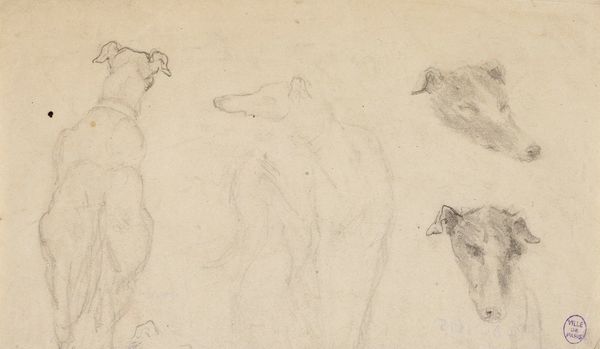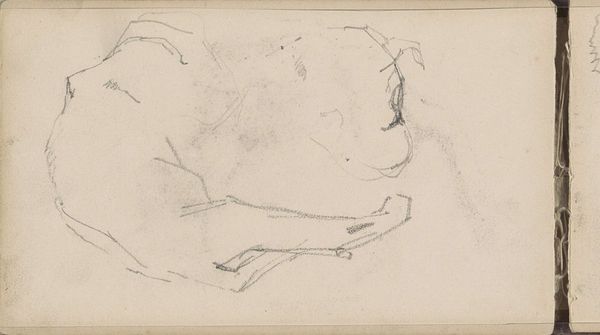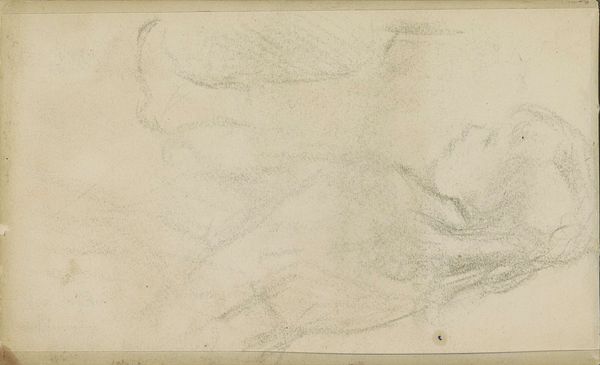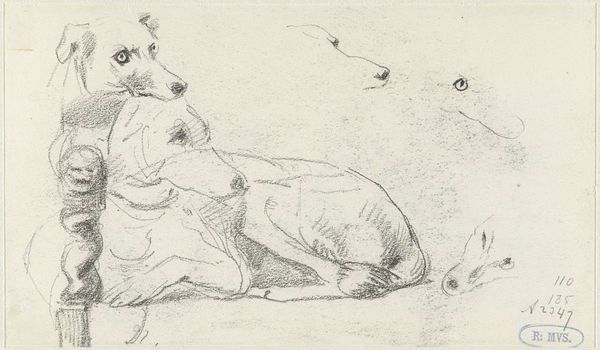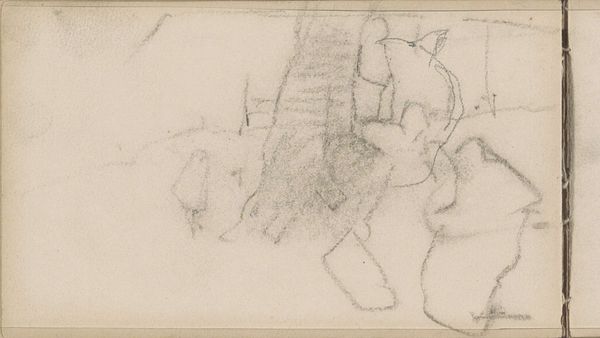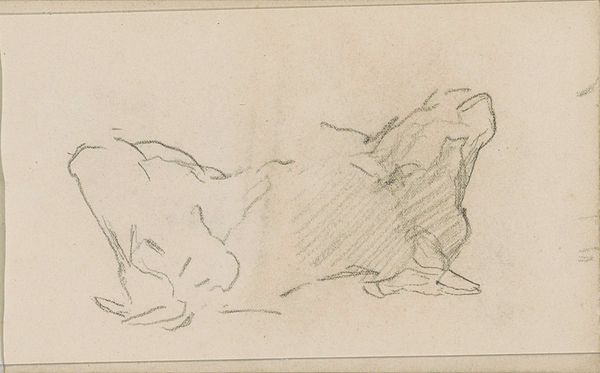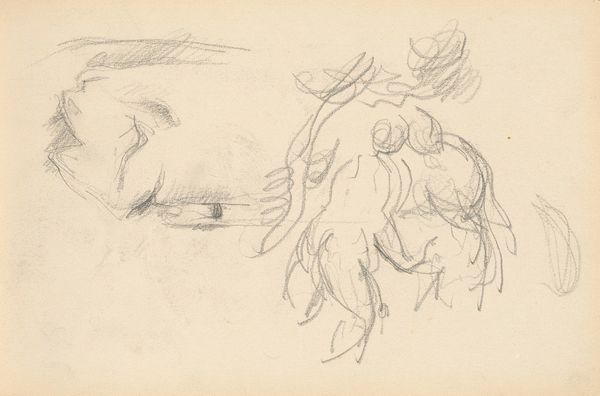
Dimensions: height 103 mm, width 197 mm
Copyright: Rijks Museum: Open Domain
Curator: The quick, almost impatient lines evoke such immediacy. There's a tenderness, too, don’t you think? Editor: We’re looking at a pencil drawing by George Hendrik Breitner, fittingly titled “Two Dogs' Heads,” made sometime between 1880 and 1923. It is currently held in the collection of the Rijksmuseum. My initial thought is how informal and off-the-cuff this work is! It reminds me of a snapshot capturing a fleeting moment. Curator: Absolutely, it feels incredibly intimate. I’m drawn to the slight variations in each dog's head—each a subtle mirror reflecting contrasting states. I think the dog is the one that loves truly in a reciprocal relationship. Editor: A good point. The rough pencil work emphasizes the textural differences between their coats. You can imagine feeling the different qualities. This lends to an almost scientific examination of form and texture through this light pencil work, and yet retains an endearing simplicity. There is also the political function that pets played for domestic life at the time. Curator: That's precisely what arrests me—this dance between objective study and empathetic rendering. Look at the lines denoting the eyes. Each stroke feels like an attempt to capture not just form, but the very essence of “dog-ness”. Breitner is evoking archetypes of the loyal, domestic animal. Editor: He manages to skirt a nostalgic rendition through his swift lines. Breitner certainly has a keen understanding for representing how modern life feels –fragmentary, provisional, and unvarnished. It almost captures the quickening pace of the streets of Amsterdam in those times! Curator: And these sketches may have very well served a role in his broader practice. These humble dogs stand as emblems, capturing loyalty but also domestic life through these almost unconsciously symbolic images of domestic animals. Editor: It’s remarkable to think how a seemingly simple sketch like this can offer such an opening into both the personal world of the artist and broader social contexts of the era. Curator: Indeed, a brief encounter leaving behind echoes of both quotidian moments and larger cultural currents, captured on a single piece of toned paper.
Comments
No comments
Be the first to comment and join the conversation on the ultimate creative platform.
